Comics (Penguin book of)
| série: | Etude Comics |
| dessinateur / scénariste: | Perry+Aldridge |
| éditeur: | Penguin EO 1971 |
| genre: | Etude |
| classement: | biblio526 |
| date: | 1971 |
| format: | broché |
| état: | TBE |
| valeur: | 20 € |
| critère: | ** |
| remarques: | the Penguin book of Comics, english book a slight history of comics devised by George Perry, UK author, and Alan Aldridge, UK designer, cover illustration by Bob Smithers the Penguin book of comics first appeared in 1967, since then, the strip cartoon has gained ground in its recognition as an iconographic influence in art and as visual communication, the Italian magazine Linus, a critical review of the strips, as published a British edition, recently the Institute of Contemporary Arts in London staged an explosive exhibition of comics under the title "Aaargh" with considerable press and television coverage, the purpose of compiling this book is to demonstrate the pleasure, interest and importance of the fascinating comic strip medium 1/ the comics, what can they give us? the world of narrative pictures, the picture being the first and universal language, the first pictures were named palaeolithic drawings, the Bayeux tapestry was perhaps the first strip cartoons, at least they are remarkable arranged textile strips, modern pictures tend to us now cinematic techniques the most succesful strips concern themselves with American life on a mundane rather than of an heroic level, but above all it needs continuous evolution and follows the actuality (new women in the twenties, adventures and exotism in the depression of the thirties as well as satire and gag in the fifties strips are thus a lively and usually accurate mirror of the times we live in, it is mostly commercial art but strips can also be magnificent, perhaps the most outstanding early visionary of comic strips was Rodolphe Töpffer (influenced by Hogarth, Töpffer was the creator of physiognomics) the comic strip, its form, its conventions, its style, the use of the imagination and who are the readers of comics? 1A) the picture section Egyptian hieroglyphe, Greek vase, Roman relief e.g. the column of Trajan, Bayeux tapestry, illuminations on Middle Age books, early printing, Hogarth's satirical engravings, strip techniques, Töpffer, Punch, Gustave Doré's illustrations (l'histoire de la Sainte Russie, 1854), newspapers in Victorian England, penny bloods, cuts and chips, etc 2/ Britain, the comic cuts tradition the first pictures were mostlyx based on religious origin, it follows Egyptian (book of dead), Greek (gods and heroes), in Middle Ages, the earliest books (incunabula) competed with the illuminated manuscripts, in 1450, Gutenberg invented the first printing press = biggest single landmark in the history of communication, 1741, beginning of political satires (Hogarth) 2A the comic section Ally Sloper's Halfholiday, comic cuts, one halfpenny chips, Dan Leno's comic journal, the Jester, the two Pickles, the grand new coloured comic paper: the champion comic Chuckles, the Rainbow, comic Life, the funny wonder, the Butterfly and Firefly, Tiger Tim's tales, Playbox, Golden, Knock-Out, Thunderbirds, Whizzer Eagle the new national strip cartoon weekly, 3/ the American revolution in comics with the Yellow Kid, the press war, the first true strips, George McManus, Krazy Kat = greatest strip of all, Dagwood and Blondie, birth of New York's Daily News, captain Patterson's influence, Milton Caniff, Walt Kelly, essential Americaness of strip, vital function 3A/ comic section Yellow Kd, Buster Brown, Hair brush, Jimmy, and her name was Maud, originating from Max und Moritz of Busch, creation of the Katzenjammer Kids by Harold Knerr, followed by the captain and the kids by Rudolphe Dirks, Little Nemo, bringing up father, Krazy Kat, Barney Google, Gasoline Alley, little orphan Annie, Tillie the Toiler, Winnie Winkle the breadwinner, Betty Boop, Blondie and in the fifties: Tarzan, Prince Valiant, Flash Gordon, Steve Canyon, Terry and the pirates, Dick Tracy, Li'l Abner, Popeye, Pogo, the Phantom, Mandrake the magician, the Lone Ranger, the wizard of Id, Beetle Bailey, the Peanuts, Sad Sack >> p. 154 4/ whatever happened to the comic book? the development of the comic book so long off the mark, famous funnies, action comics, Superman, first of the superheroes, Batman's beginnings, golden age for the comic book, wonder woman, the denunciators, heroes and villains, the industry defends itself, the Marvel revival, the amazing Stan Lee, the great Will Eisner the comic-book origins: the first comic books consisted of reprints of strips which had already been published in the newspapers, in this form, the Yellow Kid appeared as a comic book nearly 70 years ago when R.F. Outcault was drawing him in Hearst's New York Journal, it was not until more than 30 years later that comic books really got off the ground 4A/ comic section the Yellow Kid, famous funnies, the new superheroes, the Avengers, Casey at the bat, captain America, the Spirit, Supermax, Marvel superheroes (Spiderman, fantastic Four, Iron Man, Thor, etc) 5/ you mean they have newspaper strips in Britain? the strips were late coming to British newspapers, Lord Northcliffe who started Comic Cuts and Chips in 1890, is the acknowledged founder of the popular press in Britain, he launched the Daily Mail in 1896 (a penny newspaper for one halpenny) 5A/ comic section Jane (the one and only), Wilfred, Rupert Modesty Blaise, Buck Ryan, the Ruggles Belinda, Romeo Brown, Andy Capp, Garth Flook strips, Carol Day, Rip Kirby, Tiffany Jones Jeff Hawke 6/ comics and the cultural overflow development of the strips, strips into movies, movies influenced by strips, Pop Art and what it owes to comics, strips on the stage, strips in strange media, Playboy and Private Eye, perilous future for American strips, always a place for comics in America, where many "middle-aged" strips have become national institutions, the differences over the years are subtle, but they are there, minute indices of social change, every strip too, is a barometer of attitudes at its period of inception, the early days were those of broad slapstick (Buster Brown, Katzenjammer Kids, etc) the twenties brought a quieter, more domestic type of humour (bringing up father, Gasoline Alley, Betty Boop, etc), the thirties produced many adventure strips (Tarzan, Dick Tracy, Terry and the pirates, Buck Rogers and Flash Gordon were heroes of the future, Prince Valiant of the past, Mandrake and Superman belonged to the troubled present) the forties and early fifties brought the neo-realist strips (Kerry Drake, Steve Canyon, Juliet Jones, etc) 6A/ comic section Nick Fury, agent of S.H.I.E.L.D. Thunderbirds, Krazy Kat, captain America, surrealist comic art, Fritz the Cat, Barbarella, Phoebe Zeitgeist the Pop Art with Roy Lichtenstein "whaam" 7/ picture section (film strips) Batman, Flash Gordon, Prince Valiant >> a very rich and detailed selection of comic strips but unfortunately there are only few coloured strips enclosures - cover of the book - Bayeux tapestry - Hogarth's satirical pictures - Ally sloper's half holiday - the Yellow Kid - and her name was Maud |
| couvertures: | 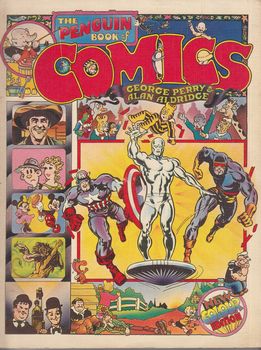 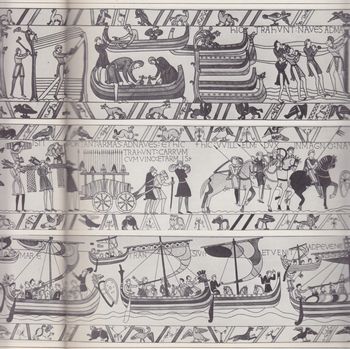 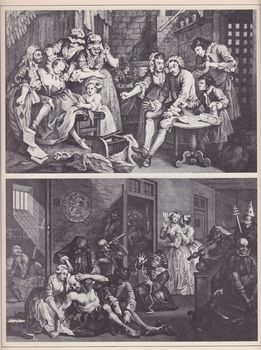 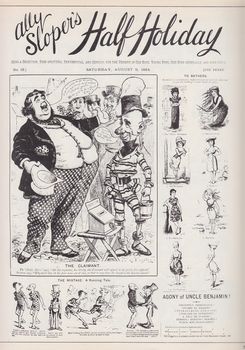 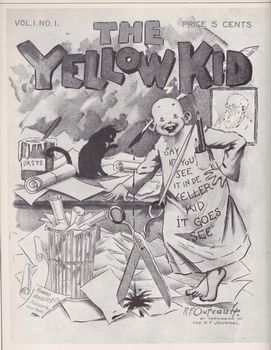 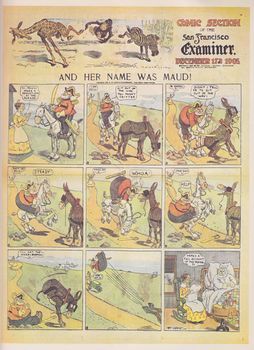 |
Copyright 2008 - 2025 G. Rudolf
